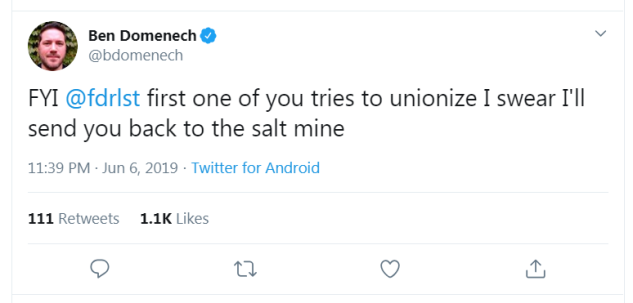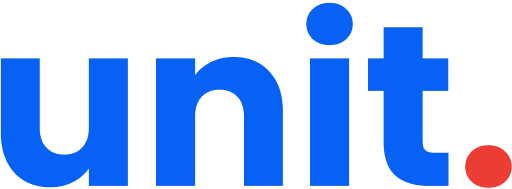As social media has become all but ubiquitous, workers and unions have to keep up with a rapidly evolving landscape. Social media is a tool, one that can be used against workers by bosses as well as by and for workers to expand their power and transparency. When considering how to use social media as an individual or as part of your union campaign, you should keep in mind best organizing practices, U.S. labor law, and the threat of surveillance from management.
Social media and member mobilization
Social media platforms have obvious benefits:
- You can reach a lot of people quickly.
- They’re decentralized spaces that can foster broad participation.
- They can be a tool to increase transparency and access to decision-making spaces.
- They're open forums to share issues and information, such as the anonymous salary spreadsheets that occasionally pop up and circulate, like at Google and among women in tech.
For example, the West Virginia teachers strike in 2018 grew partly from a private Facebook group for members to share info and discuss issues. Their numbers quickly swelled to 24,000 members and organizers used it to coordinate information-sharing to pull off a historic state-wide strike.
Another example: the Whole Worker Union (@wholeworkerwfm) - a labor action group/union of Whole Foods employees - uses Instagram to document working conditions, and spread information about benefits (or, realistically, the lack of benefits).
Social media and public campaigns
In addition to using social media to build internal communications and solidarity, it can be a powerful tool to pressure decision-makers. Employers who have a public presence or a brand that they want to defend may be particularly susceptible to pressure on social media. Using individual worker accounts can be effective in showing that staff are not afraid to be public and can also help reach a wider range of supporters and allies. Workers and supporters might tweet and tag management’s personal accounts with calls to recognize a union or co-opt a company slogan. Large campaigns often use a common hashtag to publicize and centralize information, as teachers across the country did with #RedforEd.
Social media is also a tool for centralized actions like organizing allies to attend a virtual panel and a space to submit questions about union support. Campaigns may also publicize obstacles they face to drum up public support and sympathy, such as the union leadership statements made in response to a recent threat by the Connecticut governor to call in the National Guard to break a strike planned by workers at assisted living facilities.
The very elements of social media that help organizing can also hurt organizing efforts. Moving too quickly, expecting immediate action, assuming the loudest voices are the most important, and getting into back and forths with trolls detract from the work of organizing and can turn supporters away. Before using social media (internally or externally), organizers should seriously discuss the goal and any guiding principles for usage. Most importantly, don’t go rogue! Use social media in the context of a broader strategic campaign plan.
Social media and labor law
The internet moves faster than the law, like, a lot faster.
Even when the law is clearly on a worker’s side, it can take multiple steps to prove that or see any remedy. Workers and organizers should be mindful of the legal framework set for social media to use the tool most effectively.
The NLRB recognizes that social media can be a form of “concerted protected activity” - in other words, you have the right to share information about working conditions and address work-related issues without discipline or retaliation. Posts must have some relation to “group activity” with respect to the workplace; complaints that are “egregiously offensive”, disparaging toward the employer, or that reveal proprietary or confidential information are not protected.
The line between sharing information about working conditions and disparagement is not always clear. A case was brought to the NLRB in 2017 after a worker was fired for the following Facebook post:
Bob is such a NASTY MOTHER FUCKER don’t know how to talk to people!!!!!! Fuck his mother and his entire fucking family!!!! What a LOSER!!!! Vote YES for the UNION!!!!!!
The worker got his job back because it was related to union activity and because cursing was found to be commonplace in that specific workplace. But! More recent cases reversed that ruling so workers can be fired for posting offensive language on social media - even if union activity was the motivating factor - provided that they would have been fired for the same behavior in the workplace.
Board decisions on worker-usage of social media may not always fall on the side of justice or equity. The NLRB also acknowledged that similar rulings had resulted in the reinstatement of “employees who engage in obscene, racist, and sexually harassing speech not tolerated in almost any workplace today.”
Engaging in hate speech may be grounds for termination, whether or not it is related to the workplace. And that’s honestly for the best. Unions have a duty to represent their members and uphold contractual processes, but also have to balance individual cases, like with one's involving hate speech, that can set harmful precedent for other workplaces and hurt other workers.

Employers also use social media and may find themselves called before the Board. In 2019, the publisher of The Federalist tweeted ““FYI @fdrlst first one of you tries to unionize I swear I’ll send you back to the salt mine.” The unfair labor practice was not filed by an employee of The Federalists but by labor activists who saw the public statement. The NLRB ruled that this constituted a reasonable threat to protected activity, however, it is now being appealed on First Amendment grounds and defended as “satire”.
Social media and surveillance
Many companies have social media policies that govern what workers can say on their personal accounts. For example, journalists may be disciplined for tweeting about personal politics, if it is perceived as a conflict of interest with an outlet's coverage or standard of belief in objective journalism. Whether or not you agree with objectivity or in bad-faith attacks from the far right, this appears to have been the case for a worker at The New York Times.

Social media can be used to monitor and surveil workers, regardless of the content. Calling in sick, then posting a bunch of TikTok dances or tweeting constantly during work hours could be used as grounds for discipline. Location tags could be used retroactively to reconstruct a worker’s timeline to verify that they were - or weren’t - where they said they were during work hours. Many employers recognize social media use on the job as akin to using personal time for things like a bathroom break or quick personal phone call. Social media might also be part of the job itself. Be mindful of the culture and policies at your individual workplace - think about changing your privacy settings and read your employee handbook!
We know that employers monitor accounts to try to quash labor uprisings before they turn into full-blown union campaigns. Social media can be used to surveil and monitor organizing efforts and it is a tool to increase transparency and hold people in power accountable. How to balance the two is an ongoing question for organizers and activists.

Use social media, strategically
Social media is a tool, and, like any tool, it has both uses and limitations. Organizers and unions have to figure out how to maintain core principles of union organizing within the reality and adaptive potential of technology.
Whether we like it or not, social media is here to stay, so let's use it for good and fight for the rights of workers.



